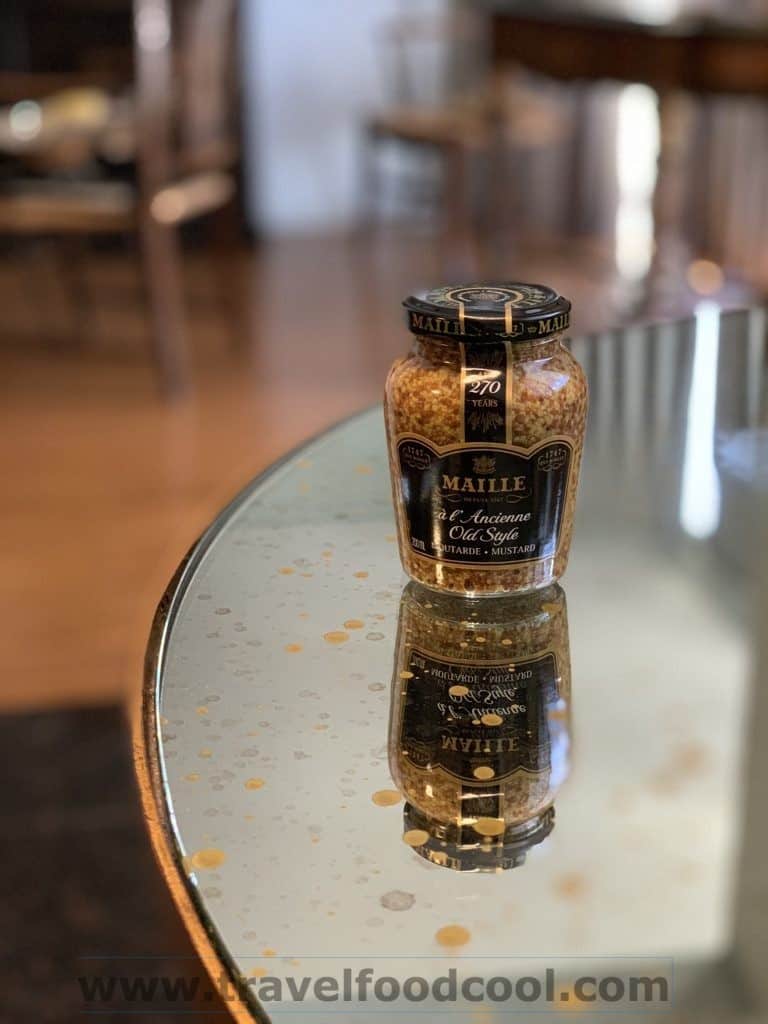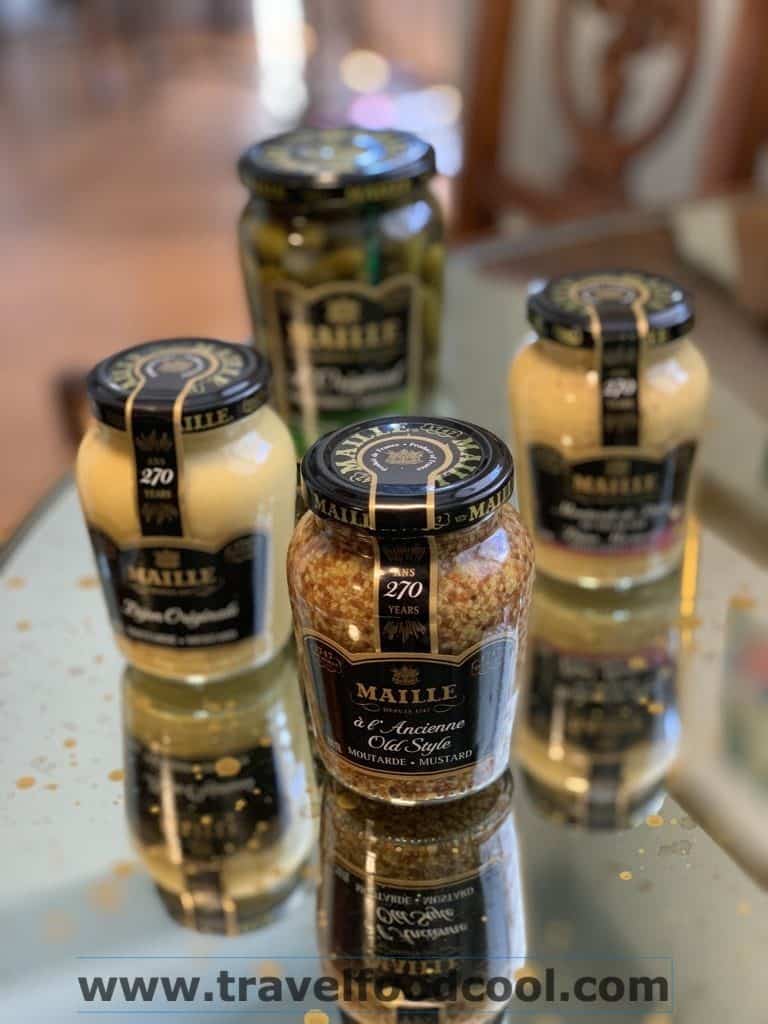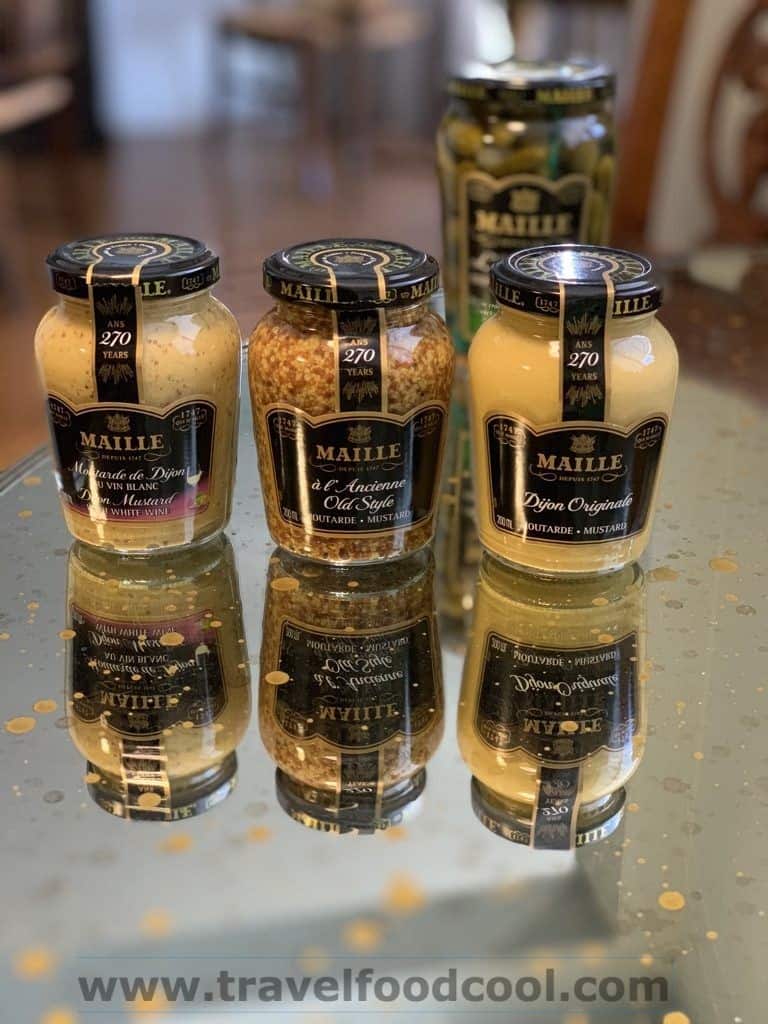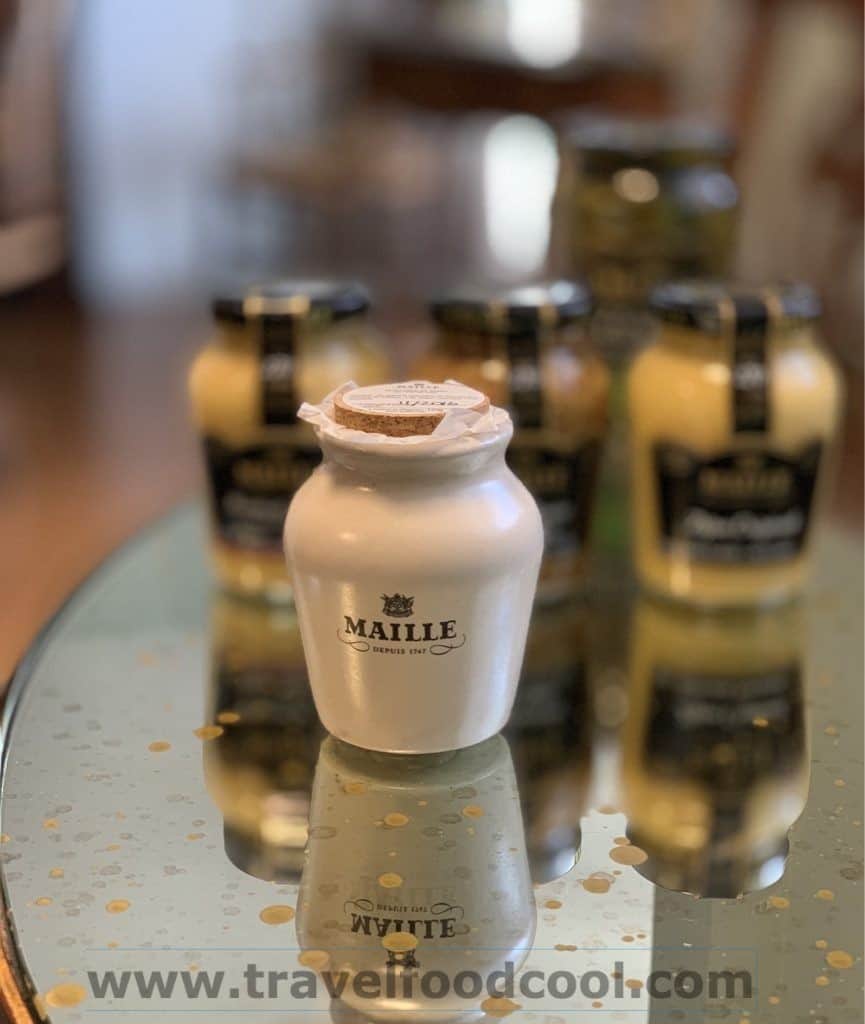
We have loved mustard for ages, starting with the Egyptian pharaohs – they loved it so much that they made sure that their tombs were stocked with mustard seed for the afterlife. Mustard really must be the first condiment humans ever put on their food. Ever useful, mustard seeds were also used in a poultice as a cure for scorpion stings (thank you, Pythagoras). “Old style” mustard is coarse mustard in which the mustard seeds are coarsely ground and give texture and crunch. Sometimes the terms “creole”, “stone ground” and “country style” are used. This episode of The Mustard Report, will be looking at Maille à l’Ancienne Old Style mustard!
La Maison Maille is one of the world’s most long-established and venerated mustard houses. In 1720, Antoine-Claude Maille (pronounced “maj” or “my”) was a distiller and vinegar-maker living in Paris. He gained notoriety by inventing the “Vinegar of the Four Thieves” to save the residents of Marseille from the plague (he advised swallowing a teaspoon of his vinegar with water). His success allowed his son, also called Antoine-Claude (the family saved its creativity for condiment making), to market his range of aromatic mustards. Antoine-Claude (the son) opened his first boutique in Paris in 1747 and became official mustard supplier to King Louis XV. Thus was La Maison Maille born.
Maille quickly became a favourite of the courts of Europe. In 1752, the King’s mistress, Marquise de Pompadour, became a loyal customer. In 1760, Maille was named official supplier to the courts of Austria and Hungary. In 1771, Maille was granted a charter as vinegar-maker to Empress Catherine II of Russia.

In 1804, upon the death of Antoine-Claude (the son), his heirs inherited 20 flavours of mustards and 50 different vinegars. The house of Maille continued its success. In 1805, lawyer and gastronomic commentator (now that’s a job description – #careergoals!), Grimod de la Reyniere, quite remarkably said “Amongst M. Maille’s vinegar is one which gives back to women something which up until then they could only lose once”. In 1821, Maille was appointed distiller to King Louise XVIII. In 1826, Maille became vinegar-maker to Charles X, in 1830, the supplier to the King of England and, in 1836, vinegar-maker to King Louis-Philippe. In 1845, Maille opened its boutique in the centre of Dijon, the home of Dijon mustard, which has welcomed visitors continually since.

Today, Maille produces a broad range of products, including mustards, vinegars and cornichons. Its mustards include its legendary Dijon Originale, its old style Dijon (which we’ll focus on below), a white wine mustard (delicious with steak), a mustard Provençale (made with red peppers and garlic) and a tarragon mustard. Its white wine and red wine vinegars are staples of the gourmet kitchen and its lovely cornichons (a must for any charcuterie platter) include cayenne and caramelised onion varieties. Maille’s boutiques in Dijon, Paris, London and New York also offer mustard on tap, drawn from special pumps and poured into refillable stoneware pots (something which I have not yet experienced, but is on my gastronomic bucket list).

Mustards that use whole mustard seeds are less spicy than their ground-version siblings. Maille’s à l’Ancienne features subtle notes of hazelnut and white wine.
Maille à l’Ancienne is great on sandwiches, chicken, pate, smoked salmon or gravlax, and any item where you want a little more mouthfeel.
Let’s try!

Container: Sold in Maille’s beautifully-shaped glass jar with its instantly-recognizable black, gold and white label. It is also available in a plastic squeezable container (I know the plastic is more practical, but I’d rather have the glass jar in my fridge and use a spoon).
Colour: A darker yellow colour with both brown and yellow seeds prominent so that it appears to be brown.
Appearance: Grainy.
Nose: Sweet, with vinaigrette notes.
Taste: Very approachable, not strong, but with a bit of a bite. Certainly not as strong as Maille’s original Dijon.
Availability: Available at fine retailers everywhere and online.
Cost: Worth every penny.
A big thank you to our friends at Maille for letting us try the Maille’s à l’Ancienne!






















Great history of mustard! I didn’t know it dated so far back!
Thanks Grayce! It really must be the worlds first (and favourite) condiment! You know we at TFC are big mustard fans!